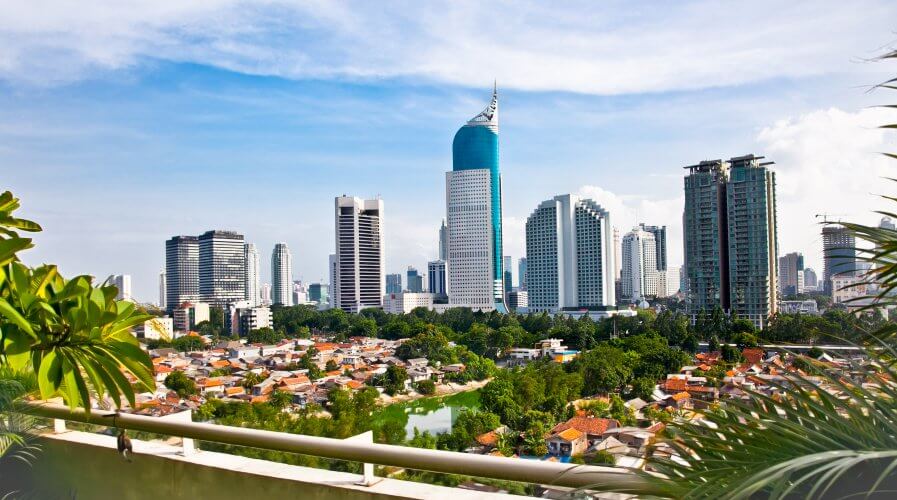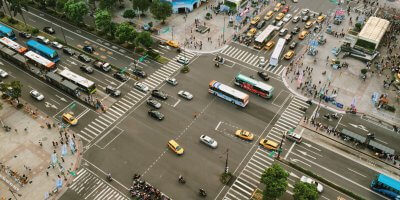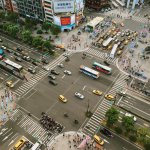
Jakarta is striving hard to become a smart city. Source: Shutterstock
Smart cities can improve quality of life by up to 30pc
WHETHER it is Asia or America, everyone is aspiring to build a smart city – and most are finding success to varying degrees, but there needs to be more effort on the part of municipal and government officials to make a real difference.
According to McKinsey who just released a 152-page report on Smart Cities, current applications of technology could improve some quality-of-life indicators by 10–30 percent.
Given the fact that the cities are bursting at the seams, are accommodating more than half of the world’s population, and are expected to add another 2.5 billion new residents by 2050, a renewed focus on making cities smarter is important.
The global think tank assessed how dozens of current smart city applications could perform in three sample cities with varying legacy infrastructure systems and baseline starting points.
It found that the tools could reduce fatalities by 8–10 percent, accelerate emergency response times by 20–35 percent, shave the average commute by 15–20 percent, lower the disease burden by 8–15 percent, and cut greenhouse gas emissions by 10–15 percent.
Understanding the potential of smart cities
The world’s infrastructure didn’t come into existence all of a sudden. It was built over decades. As a result, it’s not always at par with the most modern technology or the latest innovations.
Despite investing US$2.5 trillion on infrastructures such as transportation, power, water, and telecommunications systems, there’s a lot that needs to be overhauled.
Especially when we talk about building smart cities, we must remember that some cities lend themselves better to emerging technology applications than others.
New York and cities in China, for example, has an extensive network of street-cameras which can easily be hooked into an artificial intelligence (AI) powered central server that generates relevant insights (from facial recognition) for different divisions of the federal and state government.
Bangkok, on the other hand, and some cities in Indonesia and the Philippines, don’t have the extensive network of cameras and hence, an investment needs to be made in overhauling the city’s security in order to benefit from facial recognition technology.
Security and public safety
Technology can help reduce fatalities (from homicide, road traffic, and fires) by 8 to 10 percent, according to McKinsey.
In a high-crime city with a population of five million, this translates into saving up to 300 lives each year.
Incidents of assault, robbery, burglary, and auto theft could be lowered by 30 to 40 percent.
On top of these metrics are the incalculable benefits of giving residents freedom of movement and peace of mind.
Daily commute
By 2025, Gartner believes that cities that deploy smart-mobility applications have the potential to cut commuting times by 15 to 20 percent on average, with some people enjoying even larger reductions.
The potential associated with each application is highly variable, depending on each city’s density, existing transit infrastructure, and commuting patterns.
In a dense city with extensive transit, smart technologies could save the average commuter almost 15 minutes a day.
In a developing city with more grueling commutes, the improvement might be 20 to 30 minutes every day.
Better health
McKinsey’s report suggests that applications of emerging technologies can help prevent, treat, and monitor chronic conditions, such as diabetes or cardiovascular disease, making the biggest difference in the developed world.
Remote-patient-monitoring systems have the potential to reduce the health burden in high-income cities by more than 4 percent.
These systems use digital devices to take vital readings, then transmit them securely to doctors in another location for assessment.
This data can alert both patient and doctor when early intervention is needed, heading off complications and hospitalizations.
Sustainable environment
As urbanization, industrialization, and consumption grow, environmental pressures multiply.
Applications such as building-automation systems, dynamic electricity pricing, and mobility, could combine to cut emissions by 10 to 15 percent.
Water-consumption tracking, which pairs advanced metering with digital feedback messages, can nudge people toward conservation and reduce consumption by 15 percent in cities where residential water usage is high.
In the developing world, the biggest source of water waste is leakage from pipes. Deploying sensors and analytics can cut those losses by up to 25 percent, says McKinsey.
Applications such as pay-as-you-throw digital tracking can reduce the volume of solid waste per capita by 10 to 20 percent.
Overall, cities can save 25 to 80 liters of water per person each day and reduce unrecycled solid waste by 30 to 130 kilograms per person annually.
Digital urban commons
Finally, McKinsey says that its survey revealed that connecting residents with local officials via digital channels could nearly double the share of residents who feel connected to the local community, and nearly triple the share who feel connected to local government.
Establishing channels for two-way communication between the public and local agencies could make city governments more responsive as well.
Many city agencies maintain an active presence on social networks, and others have developed their own interactive citizen apps.
See a #mke pothole, dumping, broken streetlighting, graffiti, too tall grass? Download the MKe Mobile app, take a photo, click 2 buttons and we are on it! With 90 square miles of City, citizen reporting really helps us all. pic.twitter.com/V5aKVtfOdM
— HOME GR/OWN Milwaukee (@HOMEGROWNMKE) June 6, 2018
In addition to disseminating information, these channels create vehicles for residents to report concerns, collect data, or weigh in on planning issues.
READ MORE
- Ethical AI: The renewed importance of safeguarding data and customer privacy in Generative AI applications
- How Japan balances AI-driven opportunities with cybersecurity needs
- Deploying SASE: Benchmarking your approach
- Insurance everywhere all at once: the digital transformation of the APAC insurance industry
- Google parent Alphabet eyes HubSpot: A potential acquisition shaping the future of CRM




